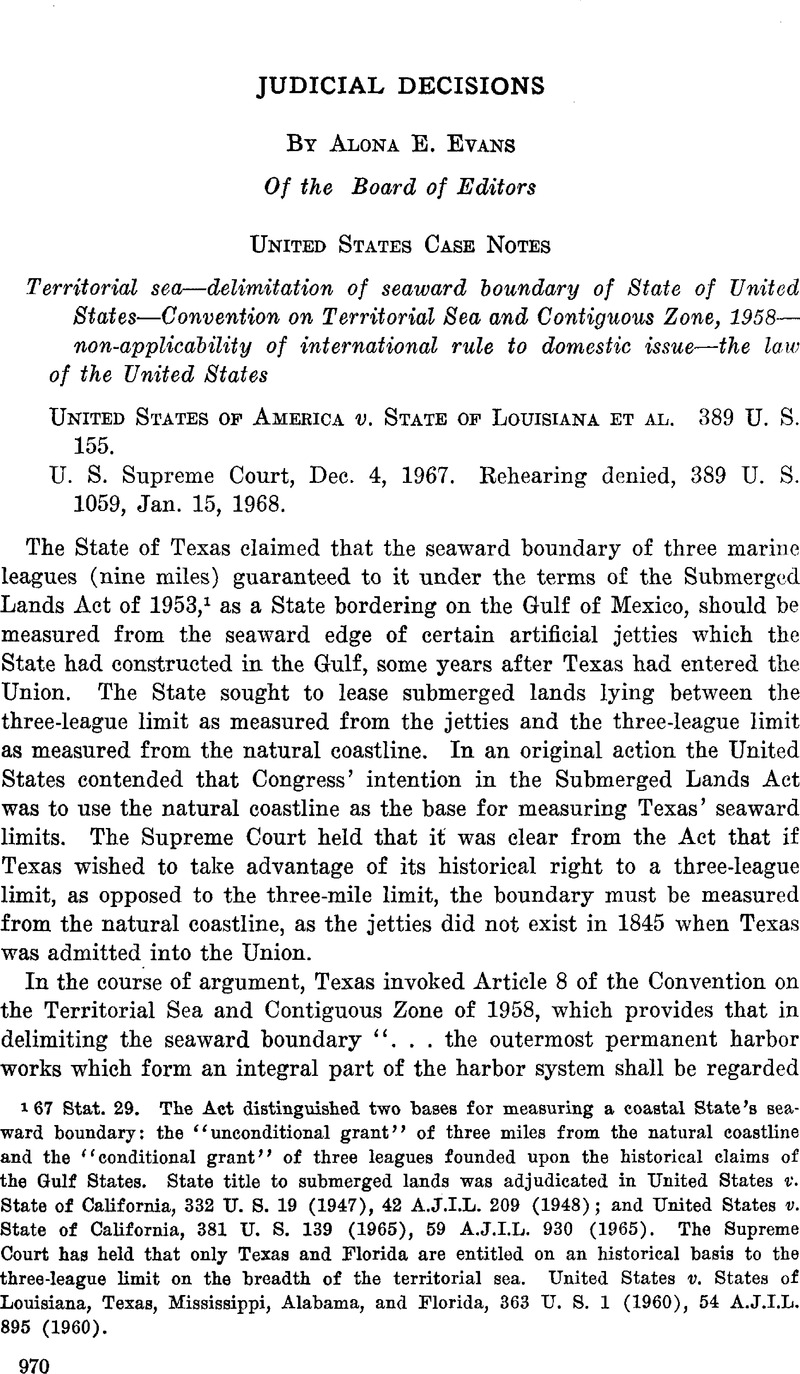No CrossRef data available.
Article contents
Territorial sea—delimitation of seaward boundary of State of UnitedStates—Convention on Territorial Sea and Contiguous Zone, 1958—non-applicability of international rule to domestic issue—the lawof the United States
Published online by Cambridge University Press: 28 March 2017
Abstract

- Type
- Judicial Decisions
- Information
- Copyright
- Copyright © American Society of International Law 1968
References
1 The Act distinguished two bases for measuring a coastal State's seaward boundary: the “unconditional grant” of three miles from the natural coastline and the “conditional grant” of three leagues founded upon the historical claims of the Gulf States. State title to submerged lands was adjudicated in United States v. State of California, 332 U. S. 19 (1947), 42 A.J.I.L. 209 (1948); and United States v. State of California, 381 U. S. 139 (1965), 59 A.J.I.L. 930 (1965). The Supreme Court has held that only Texas and Florida are entitled on an historical basis to the three-league limit on the breadth of the territorial sea. United States v. States of Louisiana, Texas, Mississippi, Alabama, and Florida, 363 U. S. 1 (1960), 54 A.J.I.L. 895 (1960).
2 15 U. S. Treaties 1606; 516 U.N. Treaty Series 205; 52 A.J.I.L. 834 (1958).
3 389 U.S. 155 at 160-161.
4 Ibid. 177.




